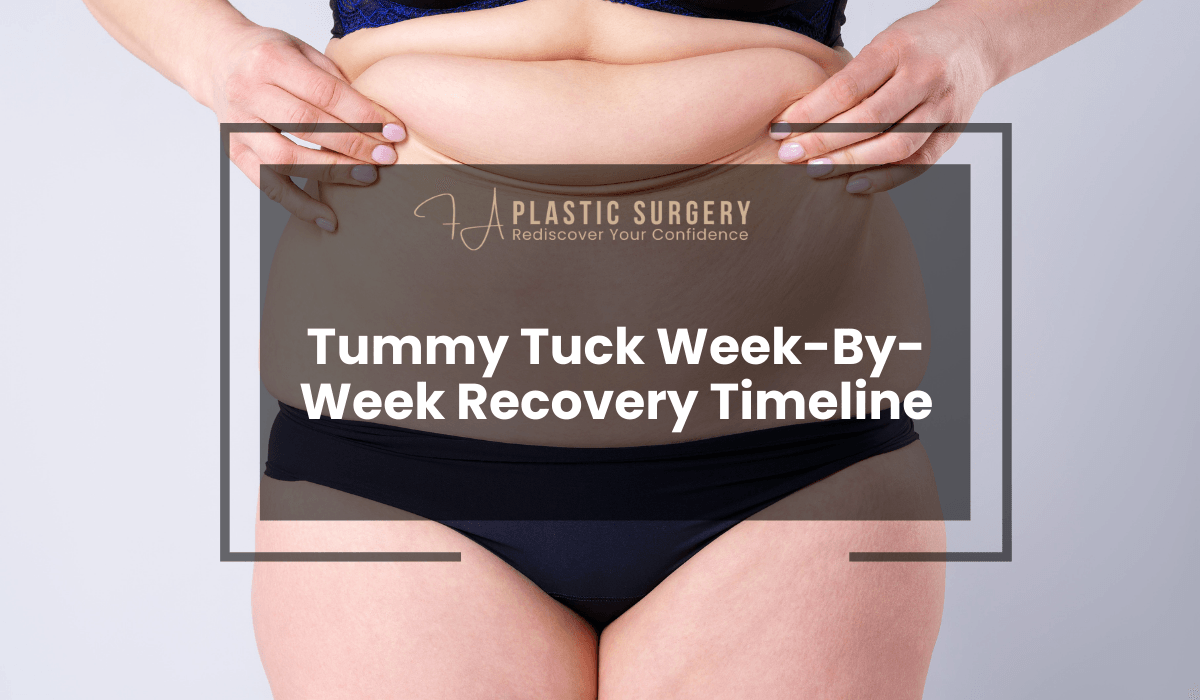Table of Contents: Tummy Tuck Week-By-Week Recovery Timeline
Understanding the Tummy Tuck Recovery Process: What You Need to Know
A tummy tuck, or abdominoplasty, is a transformative procedure that can help patients achieve a flatter and more toned abdomen. However, recovery plays a crucial role in achieving optimal results. Understanding the phases of healing allows you to set realistic expectations and follow your surgeon’s advice for the best outcomes.
The recovery process varies for each individual based on factors such as age, overall health, and adherence to post-operative care instructions. Typically, it takes several weeks for initial healing and up to six months or more for full recovery. During this time, your body will undergo different stages of healing as swelling subsides, scars mature, and mobility improves.
By being informed about the timeline of recovery and knowing what to expect at each stage, you can take proactive steps to minimize discomfort and complications. Always consult your surgeon if you have concerns or questions during any part of the process. For personalized guidance on tummy tuck procedures and aftercare, consider reaching out through our contact page.
Day 1-7 Post-Tummy Tuck: Managing Pain and Restoring Mobility
The first week after surgery is often the most challenging phase of recovery. Patients typically experience swelling, bruising, and moderate pain around the surgical area. Your surgeon will prescribe medications to manage discomfort effectively during this period.
It is essential to rest as much as possible while maintaining light mobility to promote blood circulation and reduce the risk of complications like blood clots. Short walks around your home every few hours are recommended but avoid standing fully upright until instructed by your surgeon.
You may also have drainage tubes placed near the incision site to remove excess fluid buildup. These are usually removed within a few days or up to a week post-surgery. Follow all wound care instructions carefully to prevent infection and support proper healing during this critical stage.
Week 2 Post-Tummy Tuck: Reducing Swelling and Resuming Light Activities
By the second week of recovery, many patients notice a reduction in swelling and bruising compared to the first few days post-surgery. While pain levels typically decrease significantly at this point, some soreness or tightness in the abdominal area may persist.
This is an ideal time to gradually resume light activities such as gentle household chores or short outdoor walks. However, avoid lifting heavy objects or engaging in strenuous activities that could strain your abdominal muscles or disrupt internal sutures.
Your surgeon may recommend wearing compression garments during this phase to help control swelling and support proper contouring of the treated area. Be sure to attend any follow-up appointments scheduled during this period so your progress can be closely monitored.
What to Expect 4 Weeks After a Tummy Tuck: Progress and Limitations
At four weeks post-surgery, most patients feel significantly better with improved mobility and reduced swelling. However, it’s important not to rush back into normal routines prematurely—your body is still healing internally even if you feel capable of doing more physically.
You might be able to return to work if it doesn’t involve strenuous physical activity; however, tasks requiring heavy lifting should still be avoided at this stage. Continue wearing compression garments as directed by your surgeon for optimal results.
Scars from incisions will begin maturing but may still appear red or raised at this point. Avoid exposing them directly to sunlight as it can darken scars permanently; instead, use sunscreen when outdoors if necessary.
Frequently Asked Questions About Tummy Tuck Recovery
How long does it take to recover from a tummy tuck?
The recovery process varies for each individual, but initial healing typically takes several weeks. Full recovery, including the maturation of scars and resolution of swelling, can take up to six months or more. It is important to follow your surgeon’s post-operative instructions for optimal results.
When can I return to work after a tummy tuck?
Most patients can return to non-strenuous work within two to four weeks after surgery, depending on their progress. However, jobs that involve heavy lifting or physical labor may require additional recovery time. Always consult with your surgeon before resuming work.
Will I need to wear compression garments during recovery?
Yes, wearing compression garments is often recommended by surgeons during the first few weeks of recovery. These garments help reduce swelling, support proper contouring of the treated area, and promote healing.
What activities should I avoid after a tummy tuck?
You should avoid strenuous activities such as heavy lifting, intense exercise, or any movements that strain your abdominal muscles during the initial stages of recovery. Light walking is encouraged early on to promote circulation. Your surgeon will provide specific guidelines based on your progress.
How do I care for my incision sites to prevent infection?
Your surgeon will provide detailed wound care instructions tailored to your procedure. This typically includes keeping the area clean and dry, changing dressings as directed, and avoiding exposure to water until cleared by your doctor. Notify your surgeon immediately if you notice signs of infection such as redness, warmth, or unusual discharge.

